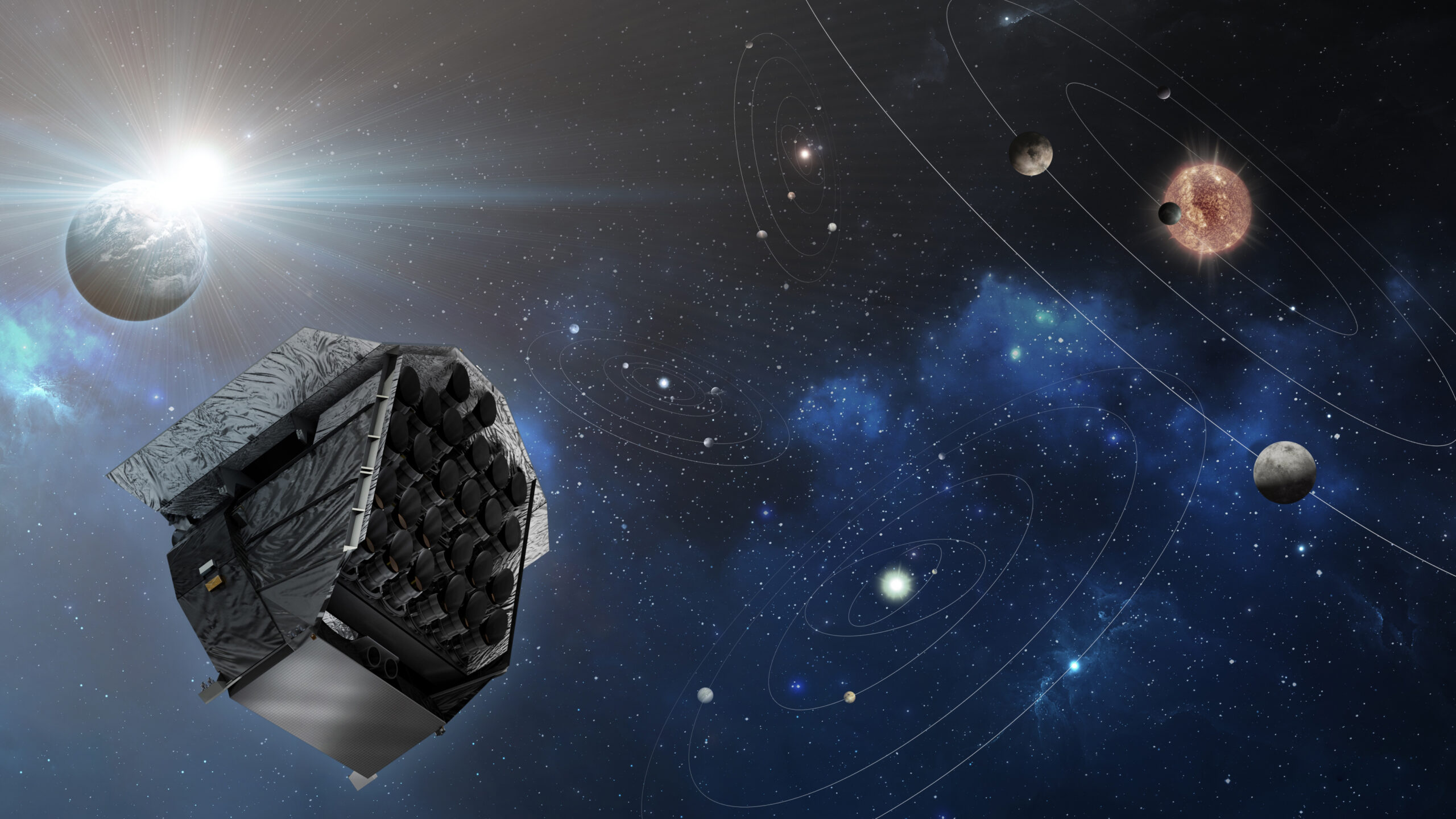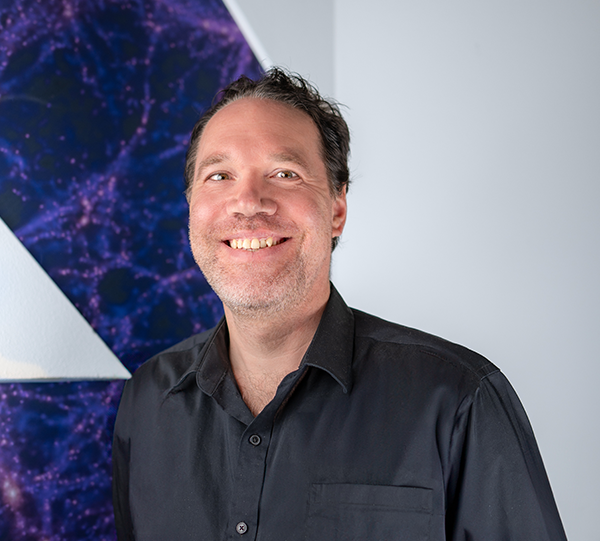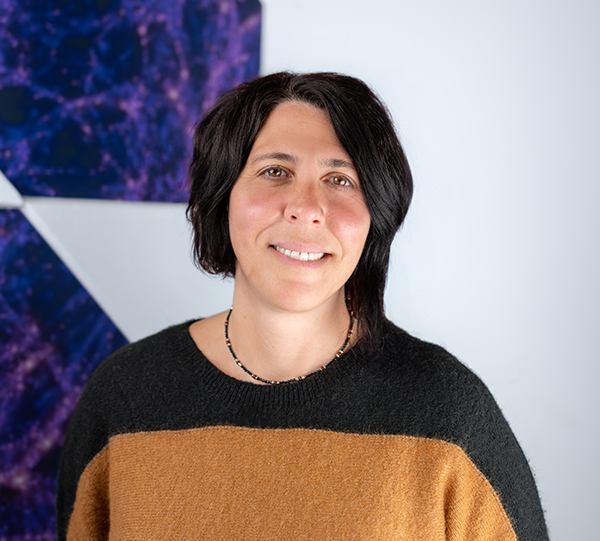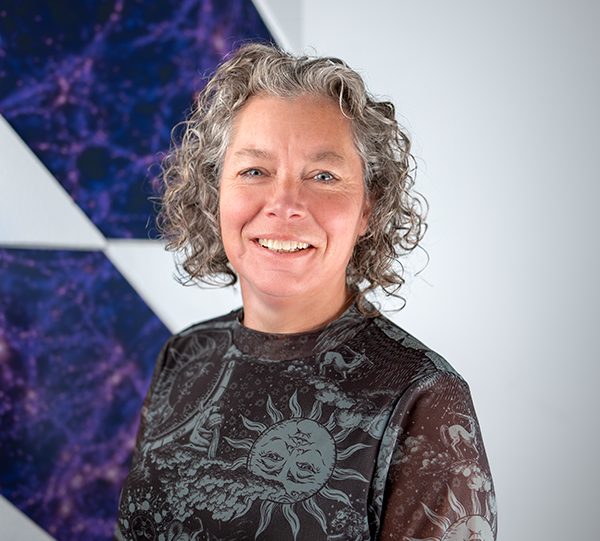| Status | In development |
| Launch | 2026 |
| Space organisation | ESA |
| Type | Visible / Infraroed (500 – 1000 nm) |
| Orbit | Heliocentric (L2) 1.5 million km behind Earth |
| Instrument with SRON contribution | 11 cameras |
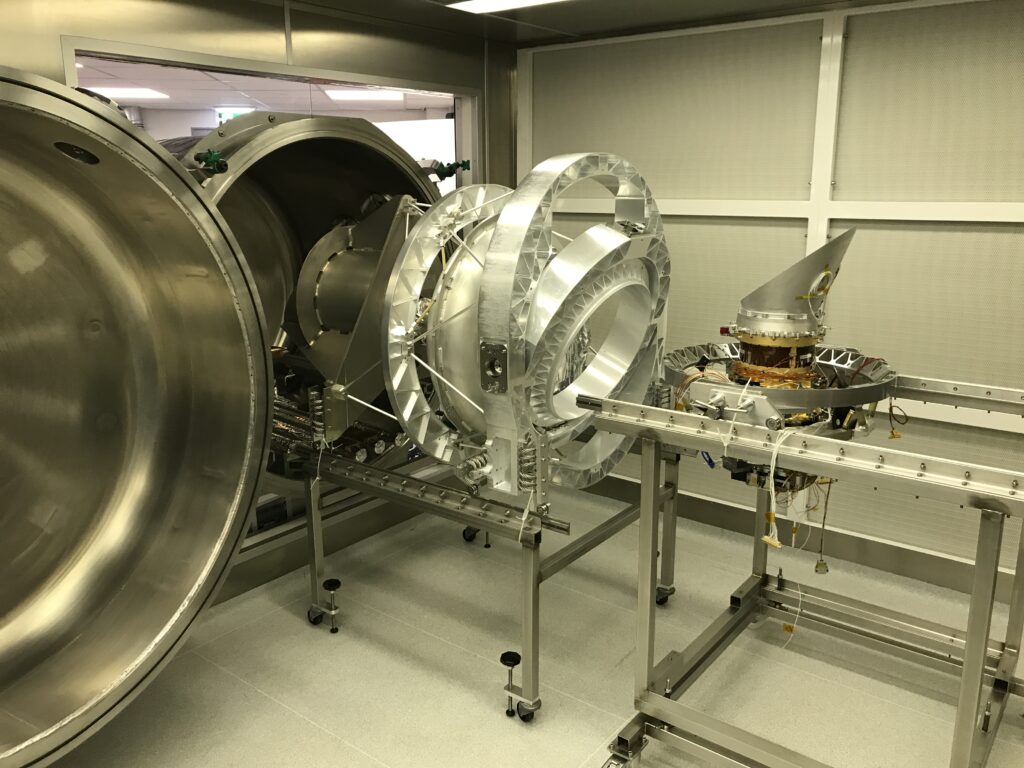
More planets than stars
Astronomers suspect that the universe contains more planets than stars. A planetary system around a star would be more the rule than the exception. To confirm this, PLATO is going to monitor hundreds of thousands of stars simultaneously for years. This is expected to yield a wide range of newly discovered planets. Among them are likely to be planets much like Earth, with a rocky surface, a distance from the parent star where liquid water is possible, an atmosphere and a stable parent star. How many of these PLATO finds says a lot about how rare our solar system is.
Dips in starlight
The most common way to discover planets is to look for dips in a star’s luminosity. When planets orbit their parent star at the right angle, they periodically dim their parent star as they cross in front of it. For planets like Earth-small and with long orbital periods-this confluence is rare. This is another reason PLATO has to watch so many stars for so long. With this, PLATO deduces how large the planets are and whether an atmosphere is possible based on the magnitude of the dips in luminosity and the rate at which the effects die away.
Jupiter-like planets
In addition, PLATO can also study Jupiter-like planets in detail. Just before such planets pass behind their star, this effect actually creates more light by reflecting starlight through their cloud cover like a full moon. When the planet actually disappears behind its star, this effect quickly dies away.
This allows the telescope to see how much starlight its clouds reflect on the day side. This says a lot about the weather system. The large amounts of light curves that PLATO will look at also tell us something about the hundreds of thousands of stars themselves, including their mass, size, age and especially their variability. With that, PLATO will also map out what types of planetary systems are possible at what point in the life cycle of stars.
Starting in 2029, ESA’s Ariel telescope will study the atmospheres of a selection of planets discovered by PLATO.
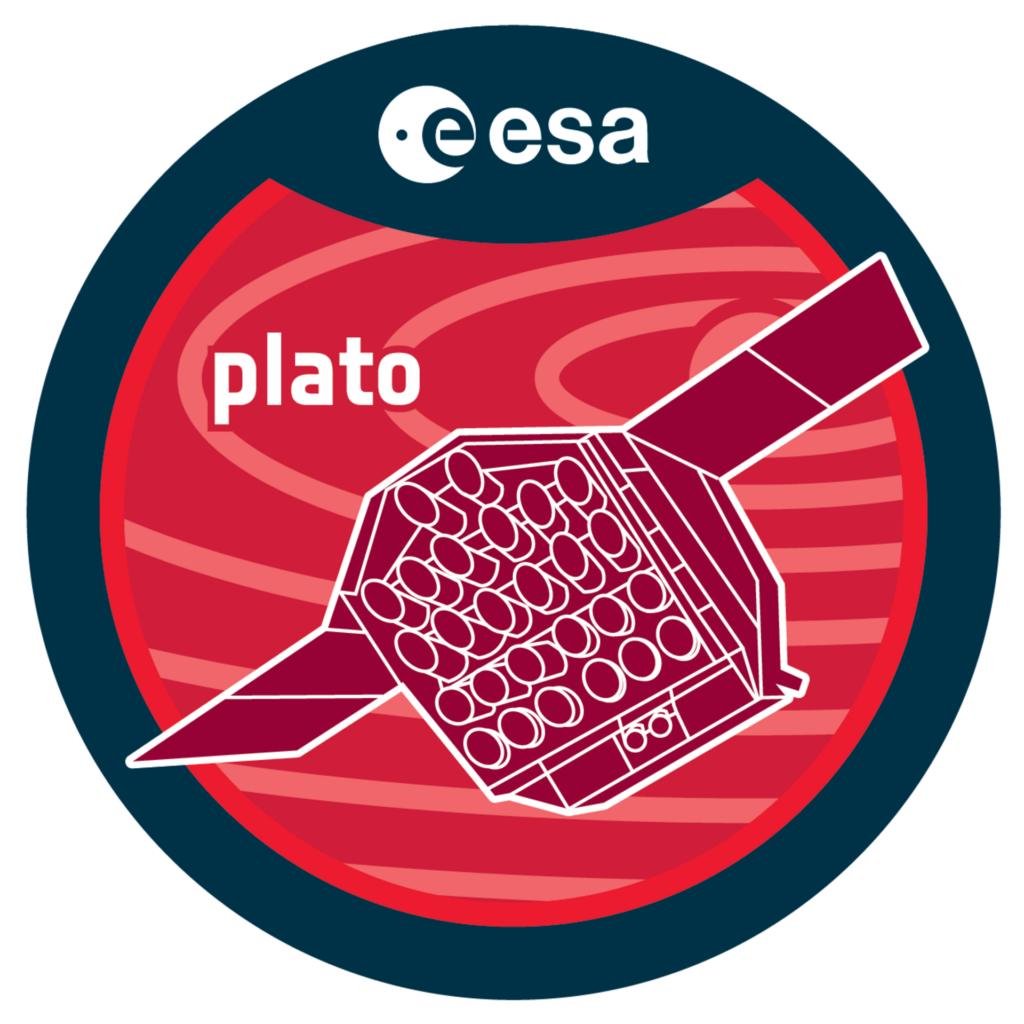
Large field of view
PLATO’s 26 cameras combine to provide an unprecedentedly large field of view for a planet-hunter. At 49 by 49 degrees, the telescope has a window on the sky more than three thousand times larger than the full moon as seen from Earth. Each camera continuously monitors more than a hundred stars within its own patch of sky. The cameras are each twenty to twenty-five centimeters in diameter. By dividing the total field of view across 26 cameras, PLATO has less noise. Most cameras take an image every 25 seconds, while two “fast” cameras print every 2.5 seconds.
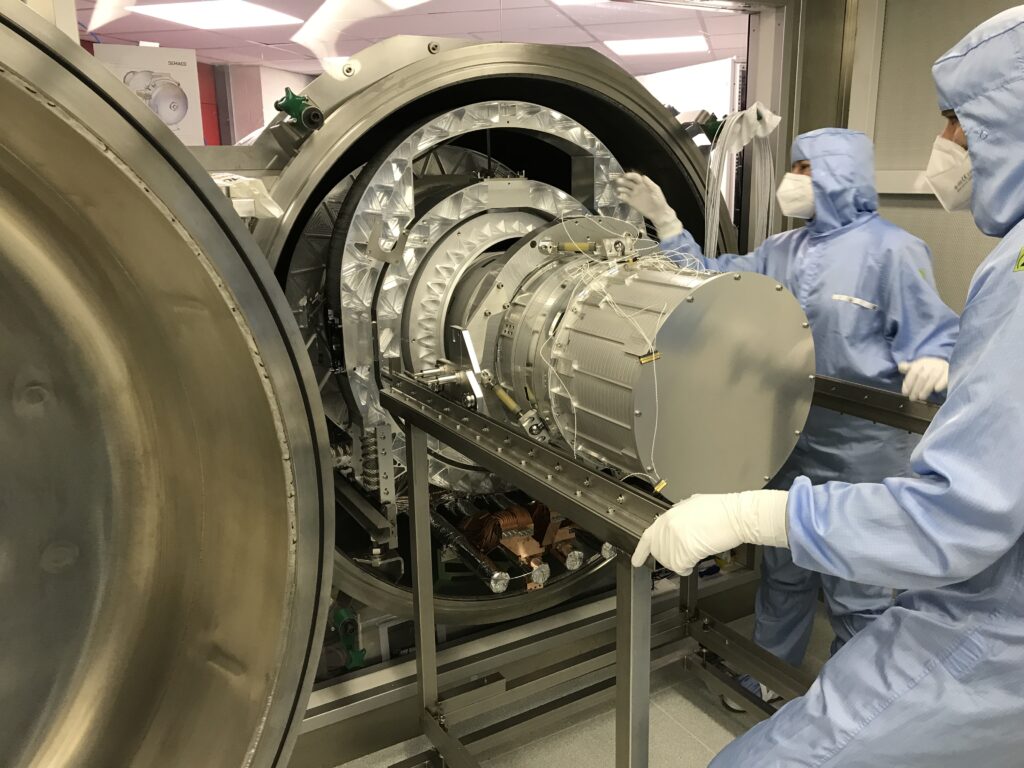
Spacesimulator
SRON has built a special simulator in its clean room that mimics the conditions of space. In a vacuum and at extreme temperature fluctuations between -110 and 40 degrees Celsius, SRON engineers test eleven of PLATO’s 26 cameras there one by one with artificial starlight. Because they produce the light source themselves, they know exactly what values the camera should measure. Thus, they find out at what temperature each camera should be calibrated for an optimal image after launch.



